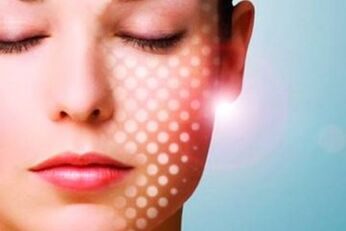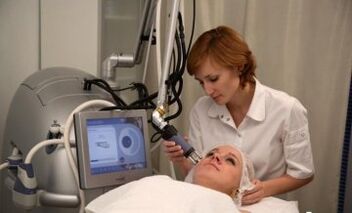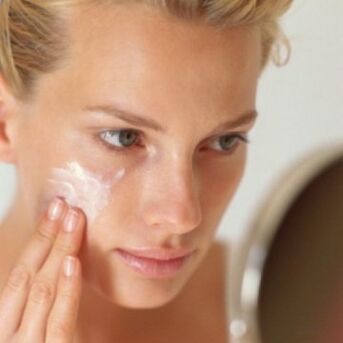
Fractional pyrolysis (fraxel) is a laser "resurfacing" method of face and body that helps with age-related and stressful skin problems.
This process is almost as effective as surgical aligners, and after pyrolysis, skin cells begin to actively produce collagen and elastin, just as they did in youth, that is, beneficial changes occur in several layers simultaneously, not justis on the outer skin.
The procedure is very effective, but at the same time traumatic. It can only be done in specialized clinics.
What it is - part of photothermal therapy, what is the nature of the method and effectiveness, indications and contraindications for surgery on the face and body using the fraxel technique, before and after photos, consequences and comments about laser surgery, estimated prices and whatEquipment usage - all of this, we'll try to tell you more.
General information
Pyrolysis refers to the process of destruction of tissue structure under the influence of high temperature. The concept was created and mediated by doctors and then introduced to use by beauticians.
And photopyrolysis is also the process of pyrolysis, but it is caused by exposure to light energy. Aesthetically, it is used for photo-epilation and laser "resurfacing" of scars and scars.
Fractional photothermolysis is a technique in which photothermolysis does not affect the entire surface of the skin, but only individual areas of it. This means that we can discuss localized destruction of tissue by heating the tissue with the help of laser (light) energy.
The nature of the program and other names
Part of the photothermolysis process is classified as a form of negative irritation to the skin because some type of damage is applied during the treatment, in this case a burn.
To achieve the desired cosmetic results, you need to initiate the regeneration process to restore the skin after damage.
This type of thermal burn looks like a "pillar" that forms through the thickness of the dermis under the target of the laser beam. This "pillar" in cosmetology is called the "Microtherapy Zone", or -MLZ for short.
In diameter, they cannot exceed a tenth of a millimeter: from about 0. 1 to 0. 4 mm, with a penetration depth of up to 0. 5 mm. Depending on the type of procedure chosen, ten to several thousand of these minimally invasives can be located on a square centimeter of the surface, with an impact rate of 3000 MLZ/sec.
If we analyze the mechanism of action of fractional photothermolysis, it is similar to medium scooter therapy, but when the rollers are used, the micro-injury is mechanically applied using the needle.
In cosmetic practice, the concept of fractional pyrolysis has several commonly used synonyms:
- skin photopyrolysis;
- DOT therapy;
- Fractional laser "polishing";
- Raft revival;
- Fractional laser nano-perforation;
Ablative and non-ablative methods
Laser ablation is the use of laser pulses to vaporize substances. When ablation fractional photothermal decomposition is used, then a laser radiation is chosen, the energy of which is mostly absorbed by water molecules.
During short-term shocks to the localized area, the laser beam almost immediately heats the water contained in the tissue to 300 degrees Celsius. For this reason, the entire "pillar" evaporates, forming an open-type microscopic wound in its place, which is surrounded by a layer of thermally coagulated cells.
After ablative photopyrolysis, recovery will be much slower and longer than non-ablative methods.
However, the effect of surgery will be objectively better, and the improvement effect will be clearer. Best to use 2 to 6 lessons. But in such a procedure, the patient is exposed to a certain risk of infection in the deep tissue of the dermis.
The non-ablative partial pyrolysis can be attributed to milder microtrauma techniques. With a laser beam, it doesn't actually damage the epidermis, creating a burn underneath it.
Destroyed tissue does not evaporate, but remains in the "column", naturally there is no open wound. Lifting is not as pronounced as the first ablation method because the products of cell decay are not removed at the time of surgery, meaning there is no "tightening" effect of the skin.
Lessons of 3 to 10 lessons are recommended. For the patient, there is virtually no risk of infection of the deep dermis, as the integrity of the surface is not disrupted.
indications, effects
Indications specifying procedures using Fraxel technology may be due to:
- Need to stimulate withered and aging skin;
- Treatment of hyperpigmented/depigmented lesions;
- Removal of scars, post-acne and small scars;
- The need to remove stretch marks.
Not suitable for getting rid of keloids.
advantage
How is this method different from the classic "polishing" using a laser? Using the traditional method, the burn area is large, and when partially exposed, it has local and punctate characteristics.
There is an intact space of the skin between the burn injuries, which makes the photothermal effect less traumatic and speeds up the healing time.
This method is suitable for treating any part of the body, but in most cases it is used exclusively on the face. Beauticians can even work on the skin on the eyelids when using the Fraxel technique.
A feature of this optical pyrolysis of the dermis is the innovative design of the DOT device itself, which avoids the loss of skin areas or the overlapping of one area on another.
Mechanism
During the initial consultation, the beautician determines what the client wants to achieve, identifies possible contraindications to the procedure, discusses possible outcomes and how they meet the client's expectations.

The doctor will definitely prescribe the risk and development of complications after surgery, as well as how to care for the skin after receiving photothermal therapy.
It is necessary to discuss and choose an appropriate pain relief method in advance, and if there is an allergic reaction to the drug, the client must report it.
A few hours before the treatment, a surface peel is performed to even out the thickness of the stratum corneum of the skin.
During the procedure, patients may experience moderate pain and discomfort. Their severity in no way depends on the model of equipment used. The level of pain depends on the depth and intensity of the laser beam, and these parameters are determined by the expert himself, focusing on the treatment goal.
The more a problem is ignored, the more it needs to affect a deeper level.
Typically, however, a common ointment with anesthetic properties is used as an anesthetic and is applied to the work area up to 40 minutes before the session.
During the session, the beautician moves a nozzle over the surface, firing a targeted laser beam. If this need arises, the same area is processed repeatedly in the same program.
Duration is 15 minutes to 1 hour. It all depends on how much leather is being processed. After partial photothermolysis, apply the calming cream to the "polished" surface.
In order to achieve the desired effect, it is necessary to go through a process of several programs - from 3 to 10, depending on the type of exposure chosen. You can have monthly meetings.
Advice (training and rehabilitation)
A few days before the scheduled surgery, the patient should start a prophylactic course of antibiotics and antiviral drugs. Of course, if there is objective evidence to prove it.
On the day that partial photothermal action occurs, the person should avoid alcohol and completely avoid any exercise.

After the non-ablative photopyrolysis process, the recovery process lasted up to three days, after the ablative type - at least one week.
If "polishing" is based on ablation, after a few days, the patient will experience redness, swelling, burning, and discomfort.
After consulting with a specialist, you can apply a cold compress or topical pain reliever to the skin, which is available in the form of a spray.
After at least three days, the color of the "polished" leather may change slightly. For example, it may become false tan due to increased breakdown of pigment-containing residues in previously necrotic cells.
Dryness can occur, peeling begins, and a person may even experience some itching for a short period of time. All of these manifestations are not dangerous and go away on their own in about a week. It is strictly forbidden to scratch the skin!
In order to recover from fraxel without complications, you need to follow some basic advice:
- You need to take care of your skin and be sure to use the recommended topical products. In most cases, these are medications used to treat thermal burns and moisturizing sprays;
- The scab formed on the surface when the wound heals should not be removed artificially, but can only fall off naturally;
- If the patient took antibacterial and antiviral medications prior to surgery, they should continue their course of treatment as directed;
- In order not to develop hyperpigmentation, it is necessary to isolate the treated skin from direct sunlight for at least one month. Usually use a sunscreen with SPF 40+;
- Scrubs and other methods of mechanically cleansing the skin are prohibited throughout the recovery period.
Possible side effects and complications
Although fractional photothermolysis is one of the most modern and safest methods, it also has many side effects:
- bacterial infection, the development of streptoderma or grape skin disease;
- Erythema persists for more than three days;
- edema of the treated skin surface persisting for more than two days;
- Post-inflammatory hyperpigmentation;
- The appearance of burn blisters, erosive cracks;
- HSV1 or worsening of acne;
- Tiny bleeding under the skin.
Contraindications (general and topical)

Partial photothermolysis is not performed in the presence of the following general contraindications:
- tumor tumor;
- lactation;
- Acute phase HSV1 and HSV2;
- infectious diseases;
- Chronic disease at presentation stage;
- any type of diabetes;
- Defects and deficiencies of the cardiovascular system;
- Disordered work of the organs of the hematopoietic system, poor blood coagulation;
- the presence of an autoimmune disease;
- Predisposition to the formation of deep scars of the keloid type;
- status epilepticus or convulsive syndrome;
- psychological bias;
- Taking isotretinoin for six months;
- Recently tanned or visited a solarium.
and the following local contraindications:
- All inflammatory processes are located in the intended working area;
- impaired skin integrity;
- any tumor of unknown origin;
- Dry cleaning the skin or any other procedure that could harm the skin.
Where and on what device, approximate price

The cost of a fraxel procedure depends on the treatment area, so the estimated price of fractional laser resurfacing will vary.
Only qualified specialists can perform photothermal therapy in a beauty hospital.
For the fraxel regeneration procedure itself, use equipment with a CO2 or erbium laser. Most common beauty salons do not have the necessary equipment or trained personnel.
The use of lasers for cosmetic purposes remains controversial. However, despite this, the procedure based on the action of a laser beam is one of the most popular, effective and safest.
Comment
We invite you to read some reviews on Fractional Laser Facial Rejuvenation:
- First comment: "I am 35 years old. Had 2 partial photothermal treatments. The second visit took place 30 days after the first. As a result, I noticed that my pores, usually slightly enlarged, tightened, The skin on my forehead and cheeks started to look more even. I'm satisfied. The only inconvenience was the peeling after the second visit. But after three days it was gone. Now I look in the mirror and enjoyown face. "
- Second comment: "I want to tell you my impressions of this method because I think it works very well. After 3 sessions, I noticed that my face has brightened and the pigment spots in some parts of my face have brightened, The scars started to be less visible and the skin tightened. The changes didn't happen all at once, but gradually. After about 4 months, I started to look 5-6 years younger than my actual age. I recommendEveryone who takes care of themselves try this wonderful thing.
- Third comment: "I'm very scared of such procedures, thinking they have more bad consequences than good. However, when the first wrinkles appear, the idea of 'magic skin transformation' starts to pop up more and more oftenIn my head. So I decided to perform photothermal therapy. During the procedure, there was a slight pain, but a tolerable feeling. After a while, there was a change of joy on the face: the wrinkles around the eyes were flattened, The skin tone has lightened and the contours have tightened. Overall, I like the effect. I will use this procedure again if necessary.
- Fourth comment: "I think this approach is essential for any woman who wants to stay young and attractive. I found something new for myself and am very satisfied. There are many positive moments, bothReflected on my face: fine lines and pigmentation are gone, skin is less sagging, inflammation is reduced, and most importantly, I like myself more. I want to advise everyone to love yourself, don't be stingy with your beauty, and use it effectivelyprogram to maintain youth.















































































